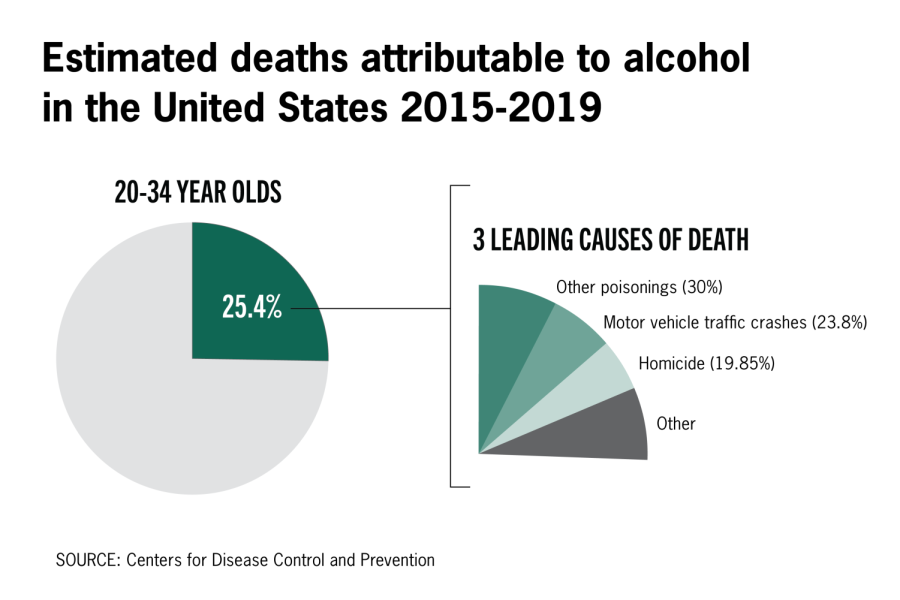Amid high numbers of alcohol-related deaths statewide, UT aims to shift drinking culture
November 18, 2022
A quarter of deaths that occur among 20 to 34-year-olds in Texas result from excessive alcohol use, according to a study from the Centers for Disease Control and Prevention published Nov. 1.
The study determined that excessive alcohol consumption accounted for 25.4% of deaths among 20 to 34-year-olds in Texas between 2015 and 2019, most commonly the result of mixing other drugs with alcohol, car accidents and homicide. On the UT campus, SHIFT aims to change the substance use culture to decrease high-risk behaviors that lead to death by emphasizing mindful decision-making and providing resources for students, SHIFT director Kate Lower said.
“(It) puts (students) in a place of agency and autonomy,” Lower said. “We’re not here to demonize use of any kind.”
Pharmacy professor Kim Nixon said since college-aged people’s brains are still developing, this group experiences fewer negative reactions associated with alcohol, like decreased motor skill capacity and hangovers. This makes it more difficult to self-regulate consumption in some cases.
“It’s very easy to develop what is a very bad habit and habitual drinking if you don’t have negative consequences,” Nixon said.
The spirit organization Texas Lassos started Longhorns Against Drunk Driving after a member was killed by a drunk driver in 2015.
“To see someone who is close to the org be lost because of someone else’s drunk driving and mistake was really difficult to the members,” Lassos president Alisha Rawal said.
Longhorns Against Drunk Driving promotes safer substance use by educating students and working with SHIFT. During Lasso events, members designate “Legal Lassos” to remain sober and help with risk management, said Rawal, an art history and computer science senior. She said she noticed less risky behavior because of healthy practices they encourage.
“I see Legal Lassos being used less and in circumstances that are less worrisome,” Rawal said. “It’s less often I feel people going out of their bounds.”
The school aims to provide students with baseline knowledge to help make informed decisions about alcohol use through programs like AlcoholEdu, said Brittany O’Malley, assistant director for prevention at the Longhorn Wellness Center. The Counseling and Mental Health Center offers the Alcohol and other Drugs Counseling Program and the University has a Center for Students in Recovery.
Lower said students can reduce risk by implementing habits such as eating while drinking and alternating alcoholic and nonalcoholic drinks, but there is no clear-cut solution for everyone.
“I think balance looks different for everybody,” Lower said. “If you are someone who is choosing to drink, all those harm reduction strategies apply in a way that works for you.”
Shifting the culture requires placing an emphasis on reforming the community’s mindset so people feel less external pressure to make certain decisions, O’Malley said.
“Risk mitigation is also about community care in some ways — people being able to have fun and socialize and have a great college experience and not having there be a default to (drink),” O’Malley said.
Conversations about substance use should go beyond specific organizations because some people who need help might not get the necessary resources or education, Rawal said.
“It’s never a comfortable conversation to have,” Rawal said. “But I think it’s an important one. … It’s incredible how many people I’ve talked to who are having these experiences and think that they’re alone.”












